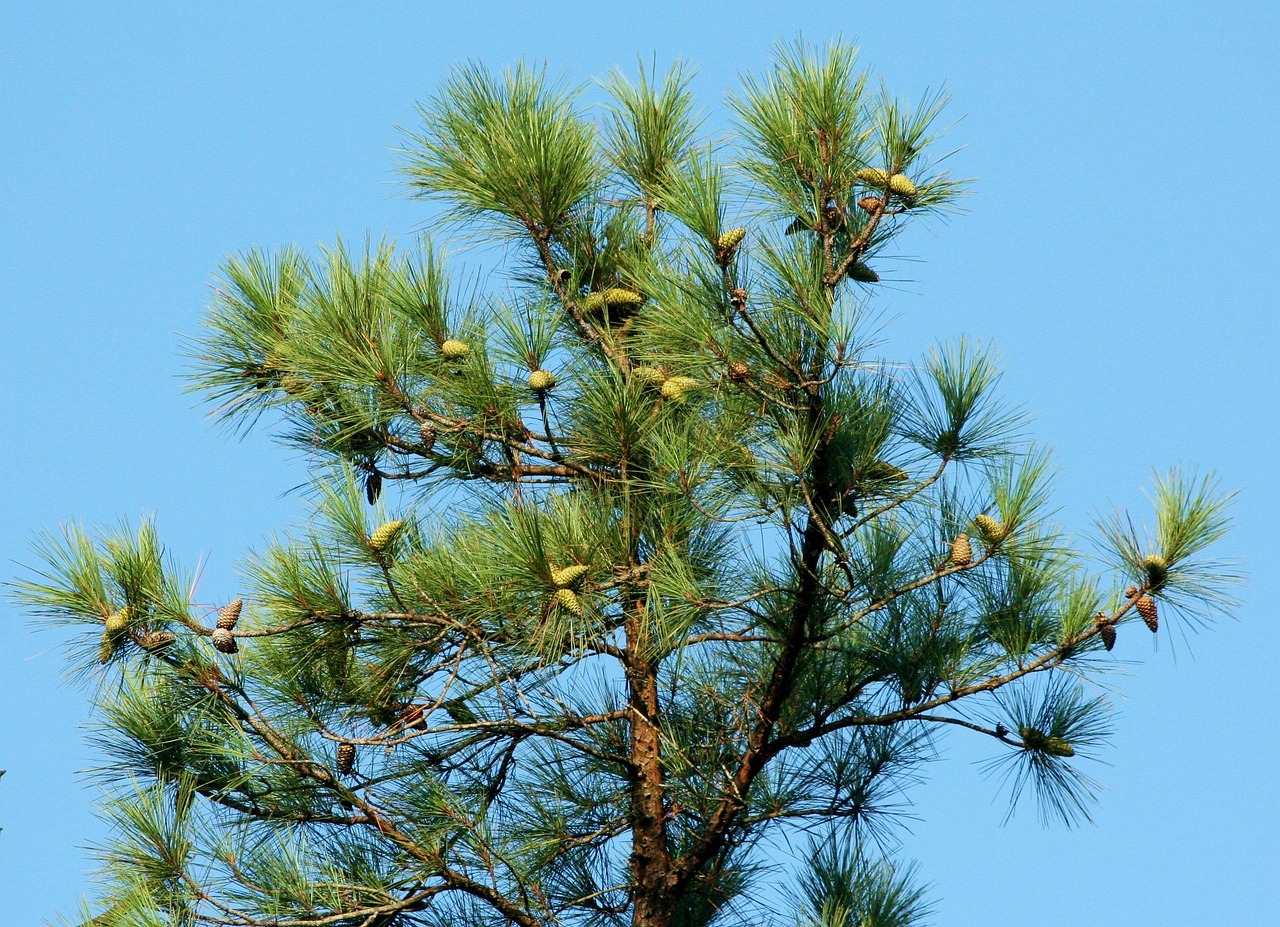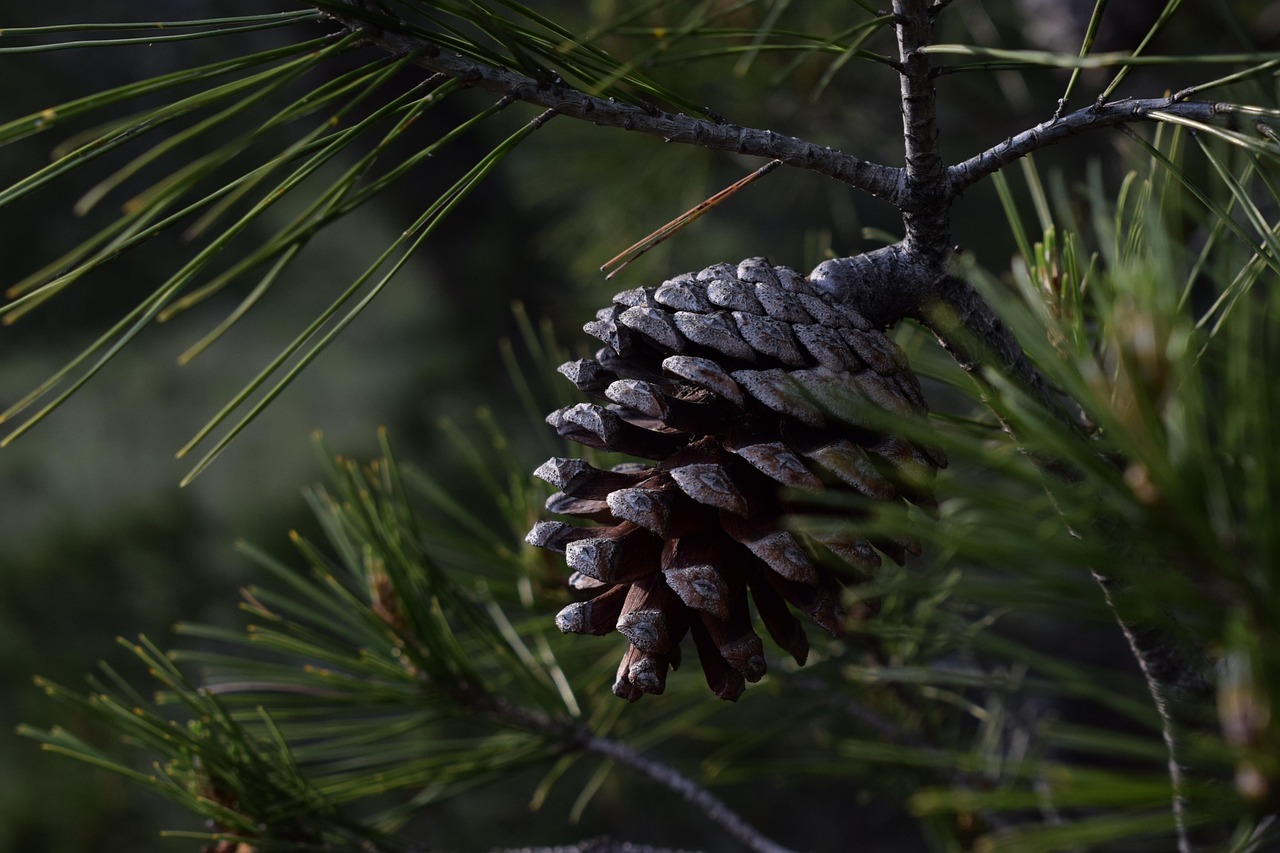Loblolly pines are crucial for their ecological, economic, and cultural significance. These trees provide essential habitat for wildlife, serve as a vital resource for the timber industry, and play a key role in carbon sequestration, helping mitigate climate change.
Introduction to Loblolly Pine

The loblolly pine (Pinus taeda) is one of the most important tree species in the southeastern United States. Known for its rapid growth and adaptability, this tree thrives in various soil types and climates. Loblolly pines typically grow in moist environments, making them a common sight in wetlands and floodplains. Their tall, straight trunks and bushy crowns make them easily recognizable among other pine species.
These trees can reach heights of up to 100 feet and diameters of 2 to 3 feet. The bark is thick and scaly, providing protection against pests and fires. The loblolly pine’s needles are long and needle-like, usually grouped in clusters of three. The tree produces large cones that contain seeds, which are an important food source for many birds and small mammals.
Ecological Importance
Loblolly pines play a significant role in their ecosystems. They are a keystone species in many habitats and offer numerous ecological benefits. These trees provide shelter and food for a variety of wildlife, including birds, squirrels, and deer. The dense foliage offers nesting sites, while the seeds serve as a food source during the winter months.
Additionally, loblolly pines contribute to soil stability and prevent erosion. Their extensive root systems help anchor the soil, reducing runoff and promoting water retention. This is particularly important in regions prone to flooding or heavy rainfall.
Economic Value
The economic impact of loblolly pines cannot be overstated. They are a primary source of timber in the United States, used in construction, furniture making, and paper production. The loblolly pine’s rapid growth makes it an ideal choice for timber plantations. With proper management, these trees can be harvested sustainably, providing a continuous supply of wood products.
- Timber: Used in various construction applications.
- Pulp: Essential for paper production.
- Resins: Extracted for use in products like turpentine.
The loblolly pine industry supports thousands of jobs in forestry, manufacturing, and transportation. It also contributes significantly to local economies across the southeastern United States.
Cultural Significance
Beyond their ecological and economic roles, loblolly pines hold cultural importance for many communities. They have been part of the landscape for centuries and are often featured in local folklore and traditions. The tree’s resilience and adaptability resonate with the values of communities that rely on forestry for their livelihoods.
Furthermore, loblolly pines play a role in recreational activities such as hiking and wildlife observation. They are often found in state parks and nature reserves, drawing visitors who appreciate their beauty and ecological significance.
Conservation Efforts
As with many natural resources, the conservation of loblolly pines is vital. Overharvesting, habitat loss, and climate change pose threats to their populations. Effective management practices are essential to ensure the sustainability of loblolly pine forests.
| Threat | Impact |
|---|---|
| Overharvesting | Reduction in tree population. |
| Habitat Loss | Disruption of ecosystems. |
| Climate Change | Altered growth patterns. |
Conservation strategies include reforestation efforts, sustainable logging practices, and habitat restoration initiatives. By prioritizing the health of loblolly pine forests, we can ensure that these important trees continue to thrive for generations to come.
Growth and Lifespan of Loblolly Pine
Loblolly pines are known for their impressive growth rate. Under optimal conditions, these trees can grow up to 2 feet per year, reaching maturity in approximately 25 to 30 years. This rapid growth makes them a preferred choice for reforestation and timber production. The lifespan of a loblolly pine can extend beyond 100 years, allowing for multiple generations of timber harvesting from a single planting.
Optimal Growing Conditions
To thrive, loblolly pines require specific environmental conditions. They prefer well-drained soils that are rich in nutrients, typically found in lowland areas. Here are some key factors that contribute to their growth:
- Soil Type: Sandy loam or clay soils are ideal, as they offer good drainage and fertility.
- Moisture: Loblolly pines thrive in areas with adequate moisture. They can tolerate short periods of drought but perform best with consistent water availability.
- Sunlight: These trees require full sunlight for optimal growth. They are intolerant of shade during their early years.
When planted in suitable conditions, loblolly pines establish deep root systems. This not only supports their upright growth but also enhances their resilience to environmental stresses such as wind and drought.
Pest and Disease Management
Loblolly pines, like all trees, face threats from pests and diseases. Understanding these threats is essential for maintaining forest health and productivity. Some common pests that affect loblolly pines include:
- Pine Bark Beetles: These insects can cause significant damage by boring into the bark and disrupting the tree’s ability to transport nutrients.
- Southern Pine Beetle: A more aggressive pest, it can lead to widespread mortality in loblolly pine stands if left unchecked.
- Weevils: Pine weevils attack seedlings, often leading to stunted growth or death.
In addition to pests, loblolly pines are susceptible to various diseases. Common diseases include:
- Fusiform Rust: A fungal disease that affects the stems and branches, causing deformities.
- Needle Blight: This disease results in browning needles and can weaken the tree’s overall health.
Effective management strategies include monitoring tree health, promoting biodiversity within forests, and applying appropriate treatments when necessary. Integrated pest management (IPM) techniques are particularly useful in maintaining healthy loblolly pine populations.
Role in Carbon Sequestration

>Loblolly pines play a vital role in carbon sequestration. As they grow, they absorb carbon dioxide from the atmosphere, storing it in their biomass. This ability makes them important allies in combating climate change. Here are some key points regarding their role in carbon sequestration:
- Rapid Growth: Their fast growth rate allows them to sequester carbon more quickly than slower-growing species.
- Long Lifespan: Mature loblolly pines store significant amounts of carbon over their lifespan, contributing to long-term carbon storage solutions.
- Reforestation Benefits: Planting loblolly pines in deforested areas can help restore ecosystems while enhancing carbon capture.
Forests dominated by loblolly pines can sequester substantial amounts of carbon dioxide, thus playing a crucial role in mitigating climate change impacts. Sustainable forest management practices ensure that these benefits can be maximized while maintaining healthy ecosystems.
Cultural and Historical Significance
The cultural significance of loblolly pines extends beyond their ecological and economic importance. For many communities in the southeastern United States, these trees have deep historical roots. Native American tribes have long utilized loblolly pines for various purposes, such as constructing shelters and crafting tools.
In modern times, loblolly pines have become symbols of the southern landscape. They are often depicted in art and literature, representing resilience and strength. The timber industry has shaped local economies and communities, further embedding these trees into cultural narratives.
3>Community Involvement Many local organizations promote the conservation and appreciation of loblolly pines through educational programs and community initiatives. Engaging the public fosters a deeper understanding of the importance of these trees and encourages sustainable practices. In summary, loblolly pines are not only vital for ecological balance but also hold significant value for communities across the southeastern United States. Their growth patterns, management needs, and cultural relevance highlight why they deserve protection and appreciation. Loblolly pine forests provide a wide range of benefits that extend beyond timber production. These forests are essential for biodiversity, water quality, and climate regulation. Understanding these benefits helps to underscore the importance of preserving and managing loblolly pine ecosystems. Loblolly pine forests are home to a diverse array of plant and animal species. The unique structure of these forests creates various habitats that support wildlife. Some key aspects include: The presence of loblolly pines contributes to the overall health of ecosystems by supporting intricate food webs. This biodiversity is crucial for maintaining ecological balance and resilience against environmental changes. Loblolly pine forests play a significant role in protecting water quality. They help filter pollutants and manage stormwater runoff. Some of the key functions include: By maintaining healthy loblolly pine forests, communities can ensure cleaner water sources for drinking, recreation, and wildlife habitats. Loblolly pine forests offer numerous recreational opportunities, making them valuable assets for local communities. These activities promote physical health, mental well-being, and community engagement. Some popular recreational activities include: The recreational use of these forests fosters a connection between people and nature, encouraging conservation efforts. By engaging in outdoor activities, individuals gain a greater appreciation for the environment and the importance of preserving it. While loblolly pines are primarily known for their timber value, they contribute to local economies in other significant ways. These trees support various industries that rely on forest resources: The economic impact of loblolly pines extends beyond timber sales. Sustainable management practices can enhance these benefits while preserving the health of forest ecosystems. Education plays a crucial role in promoting the significance of loblolly pines within communities. Schools, non-profit organizations, and local governments often collaborate to provide educational programs that focus on forestry, ecology, and conservation. Some effective strategies include: By raising awareness about loblolly pines, communities can cultivate an informed public that values conservation and sustainability, ensuring these important trees continue to thrive for future generations. >As we look to the future, the management of loblolly pines will need to adapt to various challenges. Climate change, invasive species, and changing market demands all pose potential threats to this essential tree species. It is crucial to develop strategies that ensure the sustainability and resilience of loblolly pine ecosystems. To address the impacts of climate change, land managers should consider implementing adaptive management practices. These practices may include: By proactively addressing these challenges, stakeholders can ensure that loblolly pine forests remain productive and healthy for years to come. Engaging local communities in conservation efforts is vital for the sustainability of loblolly pine forests. Collaborative projects can empower residents to take an active role in protecting their natural resources. Some initiatives could include: Loblolly pines are far more than just trees; they are vital components of ecosystems, economic drivers, and cultural symbols. Their rapid growth, adaptability, and resilience make them a cornerstone of southern forests. The ecological benefits they provide—including habitat for wildlife, water quality improvement, and carbon sequestration—underscore their importance in addressing contemporary environmental challenges. The economic contributions of loblolly pines extend beyond timber production. Their role in supporting recreational activities and providing non-timber forest products highlights the multifaceted value of these trees. Furthermore, community involvement in education and conservation efforts ensures that the significance of loblolly pines is recognized and respected. As we navigate the challenges posed by climate change and other environmental threats, it is essential to prioritize sustainable management practices that protect loblolly pine forests. By fostering community engagement and adaptive strategies, we can ensure that these trees continue to thrive for future generations. In conclusion, loblolly pines represent a vital resource that deserves our attention and protection. Through collective efforts in education, conservation, and sustainable management, we can safeguard these important trees and the ecosystems they support. Their legacy will continue to enrich our landscapes, economies, and communities for years to come.
Benefits of Loblolly Pine Forests
Biodiversity and Habitat
Water Quality Improvement
Recreational Opportunities
Economic Contributions Beyond Timber
Community Education and Engagement
Future Directions for Loblolly Pine Management

Climate Adaptation Strategies
Community-Based Conservation Initiatives
Final Thoughts
